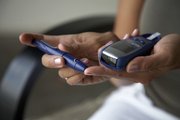The battle of the bulge is a lifelong challenge for many women. This is largely because our bodies are designed to store fat more easily than men’s bodies to protect a potential fetus during the childbearing years. We have more enzymes for storing fat and fewer enzymes for burning fat.
This struggle with weight gain gets more challenging as we age. Estrogen declines, cortisol (the stress hormone) increases and our metabolism slows, enabling more weight gain. And after age 40, we start to lose muscle mass. Body fat usually replaces that muscle.
Being overweight comes with chronic disease risks, such as higher cholesterol and higher blood pressure. These increase the risk of developing other diseases, including diabetes, which is at epidemic levels in the black community. We are almost two times as likely to develop the disease as our white counterparts.
Prediabetes: the Diabetes Precursor
When blood glucose levels are higher than normal, but not yet high enough to be diabetes, you are said to have prediabetes. Though it’s not full-blown type 2 diabetes, it still endangers your health. With prediabetes, your risk of heart attack is 1.5 times higher than normal. (It’s two to four times higher with diabetes.) And long-term cardiovascular damage could be happening already.
People who develop type 2 diabetes almost always start out with prediabetes, according to the American Diabetes Association. [http://www.diabetes.org/are-you-at-risk/prediabetes/] Without preventive measures, prediabetes can become full-blown type 2 diabetes in three to 10 years. But this doesn’t have to happen.
Diabetes can be prevented—even if there’s a family history of the disease. [http://blackhealthmatters.com/news/2013/oct/17/know-your-family-medical-history/]
Know Your Numbers
To protect yourself from developing type 2 diabetes or prediabetes, you’ll need to get a blood test. Blood sugar tests are as important for women in mid-life as regular mammograms and bone density screenings.
You have prediabetes when:
- Hemoglobin A1c levels are 5.7 to 6.4 percent
- Fasting blood sugar is 100 to 125
- Two-hour glucose is 140 to 199 after a glucose challenge
Beginning at age 45, you should have a blood test every three years so you can track your scores and offset any warning signs of diabetes right away. Start earlier if you:
- Have a family history of diabetes
- Have high blood pressure or high cholesterol
- Had gestational diabetes [http://blackhealthmatters.com/news/2014/jan/16/task-force-recommends-screening-women-gestational-/]
- Gave birth to a baby weighing more than 9 pounds
Preventive Measures
To prevent prediabetes, keep your weight in check. You don’t need to go all dramatic and drop half your body weight; losing just 10 to 15 pounds can make a big difference. You can slash your risk of diabetes in half if you:
Eat a low-carbohydrate, low-fat diet. Choose mostly fresh fruits and vegetables, whole-grain breads and cereals, skim milk and yogurt, and lean meats. Limit soda, sweets, snack foods, fruit juices and alcohol.
Do moderate-to-intense exercise 35 minutes a day, five days a week. Walk briskly, swim, dance, lift weights or do other activities that keep you moving.
Don’t obsess about your weight. Refrain from hopping on the scale every day. Just weigh yourself once a week and track your progress on a calendar. Try to do this on the same day and time every week (for example, Tuesday mornings).
Set easily attainable goals. Say, “I will walk for 15 minutes every day” instead of “I will lose 30 pounds.” Celebrate with a non-food treat when you reach your goals. Build on your successes by adding to your goals each week.
Medications can lower your blood sugar, but lifestyle changes work best, lowering your chance of developing full-blown diabetes by more than 50 percent. Additionally, they can improve your blood pressure and reduce your overall cholesterol—all while helping you look and feel better than ever! And who doesn’t want that?

